Did you you know that many of our flowers are both medicinal and culinary herbs? What comes to mind when you hear the word herb? Sage? Lavender? The study and growing of herbs has been going on for centuries, back to the Garden of Eden. Plants were given for man to eat and grow, and what we gardeners call herbs include both traditional culinary plants and those used for curing illness (medicinal).
Many of our commonly grown garden flowers have traditionally been used as herbs by our forefathers or ancestors in their gardens in the Old World. Here in the Central Great Plains, Native Americans used native and introduced species to cure and treat ailments long before we arrived. But what culinary herbs can be grown in our gardens? And what do we already have that is used by herbalists?
Culinary Herbs in the Garden
While it is likely that many of you already have some form of herb garden, others may be wanting to add new culinary herbs in. You do not need to have a garden devoted strictly to herbs. They can be added into other garden designs, without changing the overall landscape.
Culinary herbs are those which are used, either fresh or dried, primarily as seasonings in the kitchen. Herbs are more than just potential foods for us in the garden. They are also useful in attracting pollinators, predatory insects, and for deterring pests from our favorite vegetables.
Some herbs grow in Mediterranean type climates, while other are subtropical. We can grow annuals, biennials, perennials, and potted tropicals in our gardens in the Central Great Plains, and get a crop for the kitchen from each one. There are 27 culinary herbs that are commonly used in today’s and traditional cooking.
Annuals
Annuals are planted direct-sown into garden beds each spring, or planted up in the greenhouse before the final frost. In the garden, they do most of their production in summer to fall, and are harvested either weekly, or at the end of the season.
1. Anise (Pimpinella anisum)
The flavor of anise has long been used in cooking, mainly for cookies and breads. It has a licorice-type flavor for those who have yet to hear of this herb. Harvest the seeds of anise after it has dried and crush or use whole in cakes, cookies, breads, pickles, soups, and stews.
Anise prefers to be grown full sun, in well-drained, rich soil. It should be direct-sown into the garden after danger of frost. Plant anise with cabbage, broccoli, and cauliflower, as it repels aphids and cabbage moths. Anise also attracts parasitoid wasps with its tiny white flowers. It grows 2 feet tall and wide with lacey foliage, similar to Queen Anne’s lace (Daucus carota).
2. Basil (Ocimum basilicum)
Basil is probably one of the most widely grown annual herbs in the gardens of the United States. Often, gardeners will plant several kinds of basil, without even planning to use it in the kitchen. It is a very versatile herb in both the kitchen and the garden. In the kitchen, use fresh or dried leaves in Thai, Italian, and Mediterranean cooking. You can add them to salads, soups, vinegars, or various meat dishes. Some basils are good in cookies and fruit desserts.
There are many different types of basil that can be grown for various purposes in the garden. Some, such as Thai and Lemon basil, not only have strong leaf scents, but also flower really well, attracting beneficial insects. Some basils, such as ‘Boxwood’ or purpleleaf basil, are used to border garden beds or mixed in with perennials and vegetables.
Basils grow 1 to 3 feet tall and wide, depending on type and cultivar. They should be seeded into flats, 4 weeks before the last frost, in the greenhouse or under grow lights in a warm room. Basil can be direct-sown into the garden after the danger of frost has passed. They can also be planted into containers. Plant them around the garden or mixed into a vegetable bed to repel aphids, whiteflies, and other insect pests.
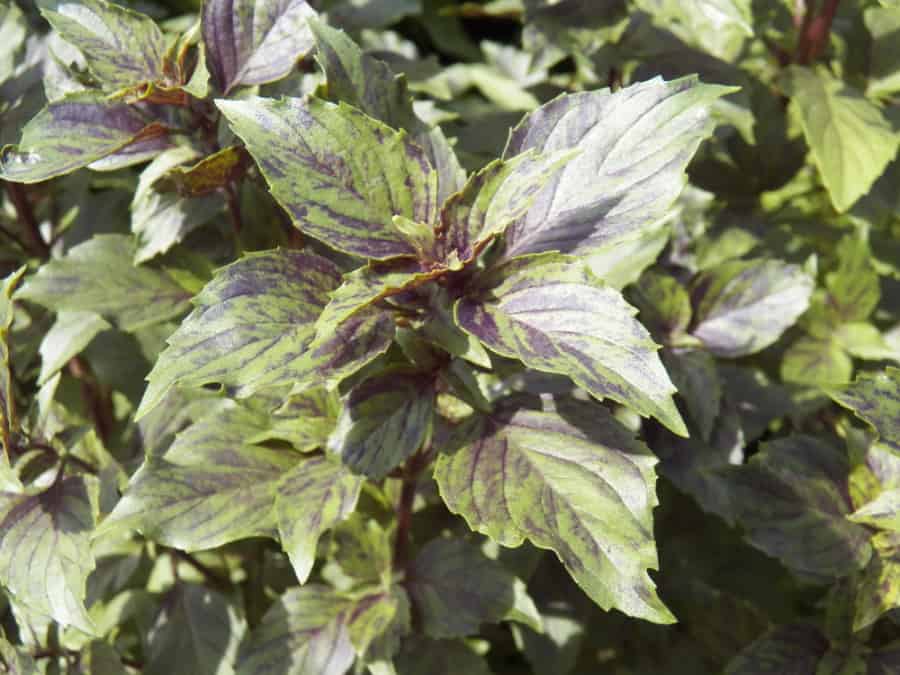
3. Chervil (Anthriscus cerefolium)
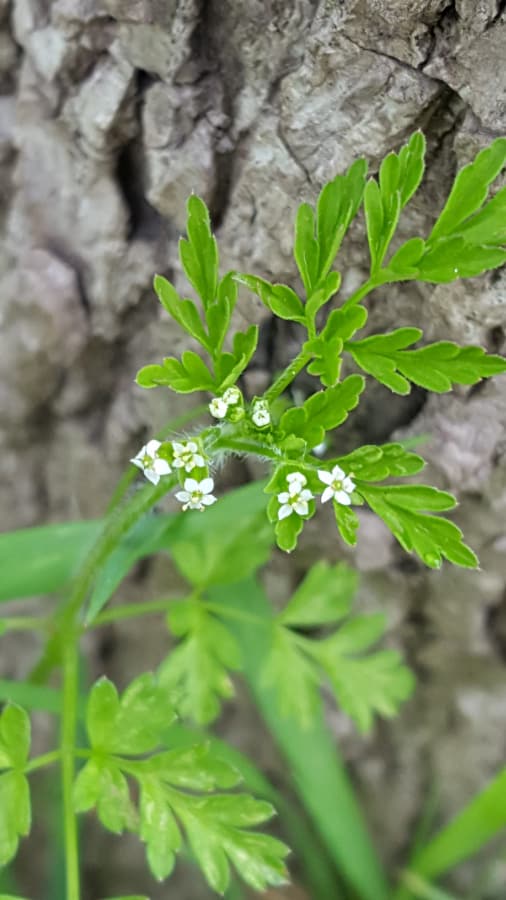
This herb is a lacy-foliaged herb with a taste that is like a cross between anise and parsley. Rich in Vitamin C, chervil can be used in salads, vegetable dishes, or added to eggs or meat. It can also be used to flavor butter or vinegar.
Considered a cool season plant, chervil grows best in the cool months of March, April, and May, or September and October, in our region. Direct-sow the seed into the garden 4 weeks before the last frost and cover the seed lightly. It prefers well-drained soil, in full to part sun. It bolts easily, so for continuous harvests, direct-sow every 2 weeks until the weather turns hot.
What is bolting? Bolting is the process of flower and seed production by an annual flower or vegetable, when the weather warms up. Most commonly associated with radishes, lettuce, and spinach.
4. Cilantro/Coriander (Coriandrum sativum)
As the leafy green its cilantro, as the seed its coriander. This is one of the most popular herbs around the world, and has been for centuries. In the kitchen, fresh cilantro leaves are used mainly in salsas, but can also be added to red pepper soups, cabbage slaws, cucumber salad, and hummus. Coriander seeds are used in flavoring beans, curries, pickles, sausage, eggs, and stewed fruit desserts.
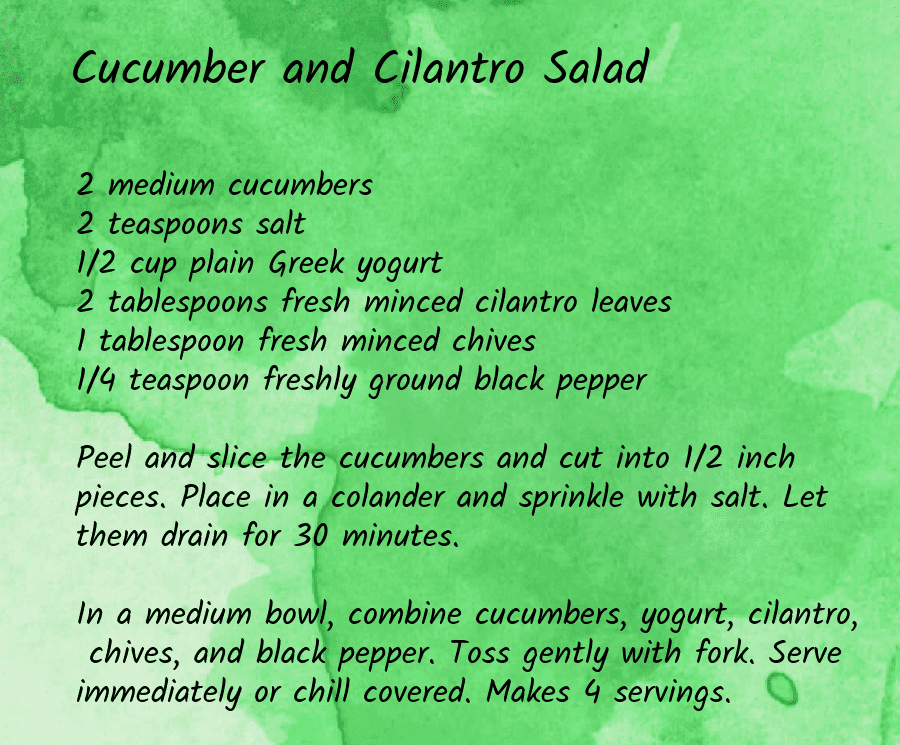
Cilantro grows best in well-drained soil, in full sun to light shade. Direct-sow into the garden after the danger of frost has passed. It grows best in the cool months of spring and fall, and begins to bolt when the weather turns hot. It is a good companion for anise, and the flowers attract beneficial insects.
5. Dill (Anthum graveolens)
Mostly used for pickling, dill has other uses both in the kitchen and the garden. My wife uses chopped dill weed in many other dishes, including Greek food. It adds flavor to meats, especially salmon, pork, and lamb. Fresh leaves can be snipped into salads or dips. Dill is associated with cucumber pickles, but can also be used for pickling snap beans, onions, asparagus, and okra.
Preferring full sun and well-drained soils, dill grows 1 to 3 feet tall and 1 to 2 feet wide, depending on type and cultivar. I prefer to direct sow dill into the garden after danger of frost has passed, either in between cabbage or into containers. Dill flowers attract beneficial insects and the plant is a host for the black swallowtail butterfly.
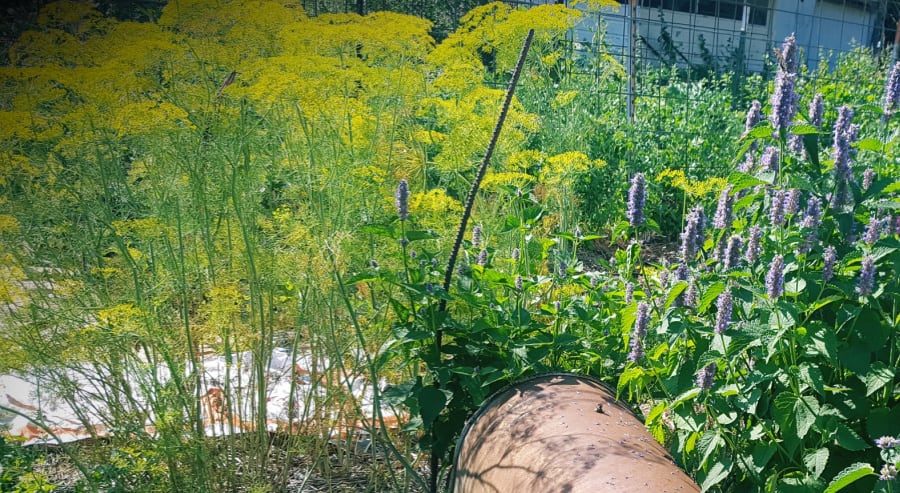
6. Lemongrass (Cymbopogon citratus)
Lemongrass ranks as one of the most asked for plants in the garden center, each year. And each year, we bring in more of it. It is not because of its culinary value though (see below). In the kitchen, lemongrass is used in Asian dishes of curries, beef, fish stews, stir-fries, and more. Leaves can be dried or used fresh in tea and syrup.
It grows best in full sun, either transplanted into the garden or a contain. Expect plants to grow 3 to 5 feet tall and 3 feet wide, if you give them enough water. It can be added as an ornamental grass to the landscape, or planted in rows around a patio, deck, or porch, as a deterrent to mosquitoes and flies.
7. Rosemary (Rosmarinus officinalis)
I really wish rosemary was hardy enough to grow here. Unfortunately, rosemary is not hardy to the upper ends of the Central Great Plains region, but can survive and grow in our southern areas (Zones 6b and up). I have tried overwintering it in the garden, but no luck yet. Maybe when my greenhouse is up… . In the kitchen, rosemary leaves can be used either fresh or dried, in potato dishes, soups, stock, marinades, butters, vinegars, and meats. Rosemary can also be paired with lavender or used alone in jelly, cookies, and savory breads.
Rosemary grows best in well-drained soils, in full sun. It prefers to be watered sparingly, much like lavender and sage. Where it is hardy, the plants can get quite large, and be shaped into topiary. Where it is an annual, rosemary grows 1 to 3 feet tall and 1 foot wide. Seeds need to be started in the greenhouse 6 to 8 weeks before last frost date, to have any harvestable size in the garden.
Biennial Herbs
Biennials grow roots and shoots in the first season, and set flowers and seeds in the second season. Often, they reseed themselves and do not need extra work for planting. There are 3 common biennial herbs for our area.
1. Angelica (Angelica archangelica)
Angelica is often lost in American gardens, I rarely if ever see it. But there are some wonderful characteristics to this native European plant, and it should be in everyone’s herb garden. In the kitchen, angelica leaves give a sweet licorice flavor to salads, soups, stews, and desserts. The seeds and roots can be used in breads, cakes, cookies, and liqueurs. And the stems can be candied or added to pies with rhubarb, gooseberry, or lemon.
A tall plant for the meek herb garden, angelica grows 4 to 8 feet tall by 5 feet wide. It prefers moist soil and light shade. So plant it along a swale or near the rain garden where it can get the moisture it likes. The honey-scented flowers attract many beneficial insects, including parasitoid wasps. Also a host plant for the black swallowtail butterfly.
2. Borage (Borago officinalis)
Borage has mostly been added to the garden to attract bumblebees, but its edible qualities are unique. The leaves, which are “fuzzy”, have a mild cucumber taste and can be added to salads for a unique texture. In the kitchen, use borage flowers in punch, iced drinks, and salads. Add the leaves to salads, cooked greens, and sandwiches. The leaves have a high mineral content, making them good for herb seasoning blends.
Plant borage in full sun to part shade in well-drained to heavy clay soils. It grows 2 feet tall and wide. Direct seed where you want it, because it has a long taproot which does not transplant well. Flowers are normally blue, but there are white flowered versions as well. Great for attracting bumblebees and other bees.
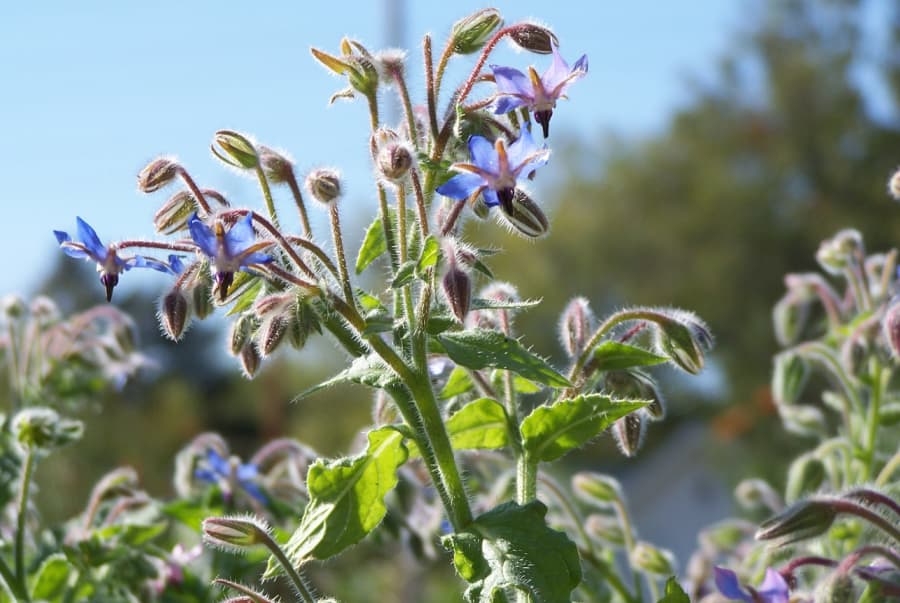
3. Parsley (Petroselinum crispum)
Parsley is perhaps best known for its use as a garnish on plates at fancy restaurants. But as an herb, it is very useful. My daughter grew parsley in her flower garden in 2021 and was super excited to harvest it for my wife, who uses it regularly as a dry seasoning. Dried or fresh, parsley has a cleansing effect on the palette, and can be added to salads, soups, meat dishes, and savory breads. Crush fresh parsley, basil, and cilantro for a unique pesto for Italian dishes.
It grows best in part to full sun and is adaptable to many soil types. It grows 8 to 16 inches tall and wide. There are 2 types, Italian (flatleaf) and curled. Start seeds 4 to 6 weeks before the final frost or direct-sow into the garden after danger of frost has passed. It can be used as a border plant, or mixed among different vegetables and short flowers. Parsley also grows well in containers. And it is a host plant to the black swallowtail butterfly.
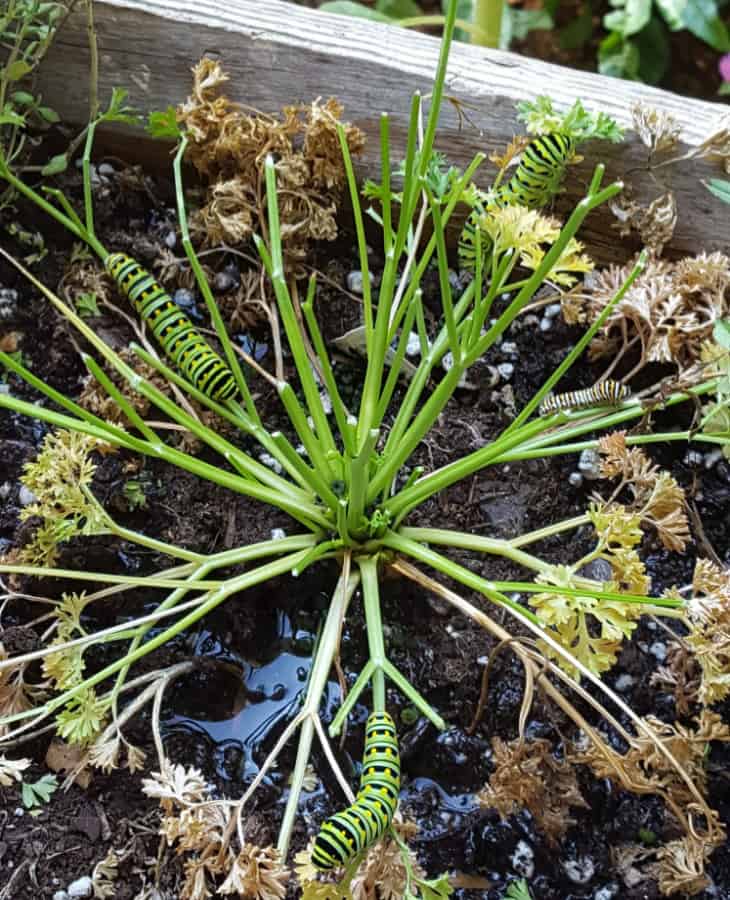
Perennials
Perennial herbs in the garden can be more than just for culinary uses, many are landscape plants, playing an important design role. But for those with strict herb or potager gardens, you may have them as more of a protector and deliverer role for the kitchen or for attracting beneficials. There are 14 perennial herbs in common use in our gardens and kitchens.
1. Anise Hyssop (Agastache foeniculum) Zones 4-8
One of my favorite pollinator plants, anise hyssop has much use in the kitchen as well. Despite its common name, it is neither anise nor hyssop. Also called hummingbird mint, this is better name. Both leaves and flowers are used in the kitchen. For that anise or licorice taste, add leaves or flowers to cakes, cookies, sweet bread, fruit salads or desserts, and drinks. It can also accent pork, chicken, and rice dishes.
Plant anise hyssop in full sun and well-drained to clay soils. Depending on cultivar, it may grow 2 to 6 feet tall by 1 to 4 feet wide. Start seeds indoors 6 weeks prior to the last frost date, or direct-sow into the garden where you want it to stay. The flowers are long-blooming, and attract many pollinators and beneficials to the garden. Leaves are strong-scented and deer-proof. It is native to North America.
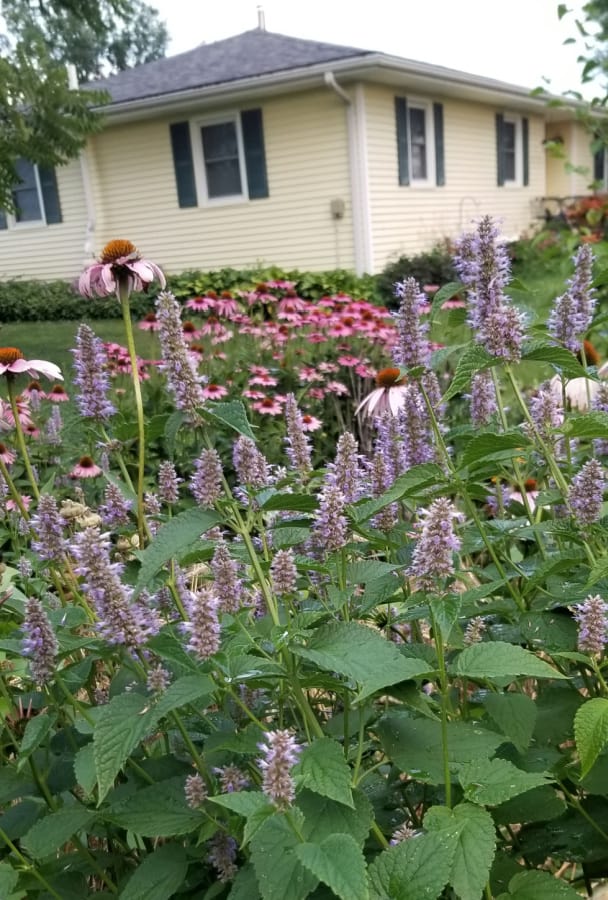
2. Chives (Allium schoenoprasum) Zones 3-10
Native to North American, this member of the Lily Family is related to garlic and onion. In the kitchen, chives are well-known as a seasoning for potatoes, both fresh and dried. The flowers are also edible, and can be used as in salads and as baby “onions” in stir-fries. You can also use the dried leaves in vegetable dishes, dips, sauces, with cheese, or with shellfish.
Plant chives in full sun to light shade, at the front of the border. Chives was the first herb I ever planted, and my original plant still grows in a container in my backyard. That plant is 20 years old. Chives grow 14 to 18 inches tall and wide. Plant seeds indoor 8 weeks before the last frost, or direct-sow after danger of frost has passed. Chives are deer-proof and attract many bumblebees to the garden when in bloom.
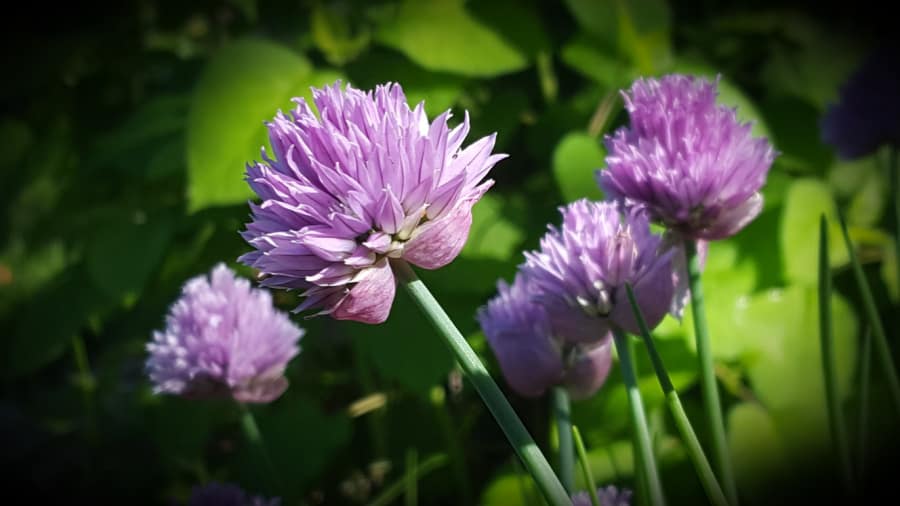
3. Fennel (Foeniculum vulgare) Zones 5-9
Fennel, added fresh to salads, tastes of anise, with a similar licorice taste. However, when cooked, fennel develops its own flavor profile. One of the oldest cultivated herbs, fennel can be added to meats, fish, vegetables, or rice. Use fresh leaves in salads, dips, sauces, and marinades.
Direct-sow fennel into the garden 2 weeks before expected last frost, in a full sun to light shade location with well-drained to moist soil. Fennel grows 4 to 6 feet tall by 2 feet wide. Not only do the flowers attract beneficials and pollinators, it is a host plant for the black swallowtail butterfly, just like parsley, angelica, and dill.
4. Garlic ( Allium sativum) Zones 4-9
One of the oldest known perennial herbs, garlic has been used for thousands of years, for both food and medicine. It has become a bit of a weed in parts of the U.S. The pungent bulbs, leaves, and flower scapes have all been used as seasoning for a variety of dishes. My wife uses garlic in anything that is not sweet. One of my favorite things to use garlic for is a mixture of minced garlic cloves, minced onion, avocado oil, sea salt, black pepper, and chopped parsley to dip toasted bread into. Yum!
Garlic grown as an annual or perennial can be summer planted into rich, well-drained soil in full sun in autumn, by cloves. Cloves are the parts of the garlic bulb. It grows 1 to 2 feet tall. Harvest garlic when the lower leaves turn brown, usually in July in the Central Great Plains. Plant garlic under fruit trees or in a fruit tree guild to deter different apple and plum moths, aphids, and other insect pests. A spray made from crushed garlic and water can kill aphids.
5. Horseradish (Armoracia rusticana) Zones 5-9
My first taste of horseradish came at the hands of my in-laws. My wife’s grandpa grew horseradish for years to use to make a sauce for fish and shrimp. It was pretty strong tasting. Besides a sauce, horseradish roots can be used to flavor beef, sausage, beets, potatoes, or coleslaw.
Plant horseradish roots in full sun and well-drained, rich soil. And give it space. The plantings can spread into a patch as big as 20 feet wide. Plants grow 2 to 5 feet tall individually, but quickly spread. It is considered to be a companion plant to potatoes.
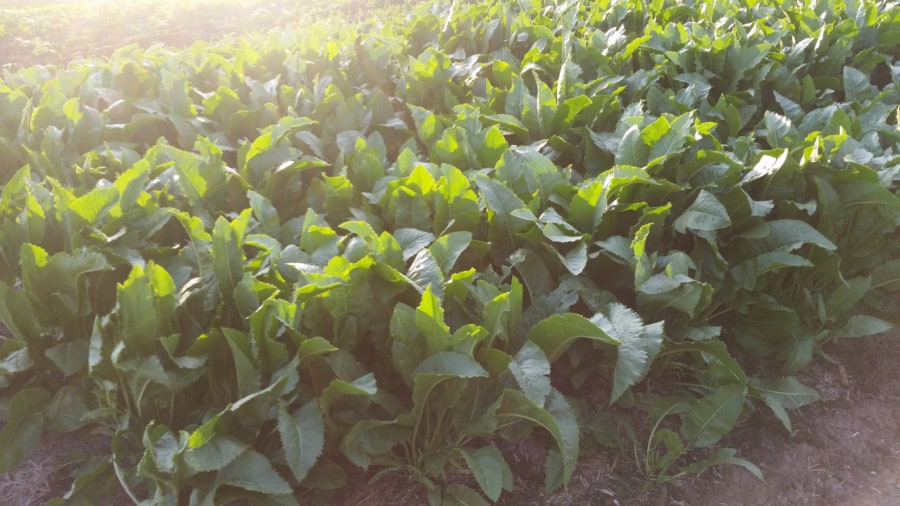
6. Lavender (Lavendula species and cultivars) Zones 5-8
This is my wife’s favorite herb, but not for its culinary uses. She loves it for its fragrance and oil production. I love it for both culinary and medicinal uses. I have used lavender flowers and leaves to make jelly, cookies, tea, and cake. It can also be used in quiche, omelets, and flavored vinegars.
Lavender is one of the most asked about perennials in the garden, in regards to growing. We sell several varieties, including the annual French lavender (Zones 8 to 10). My favorite is ‘Munstead’, though I am trying several new varieties this year. My advice to new growers of lavender: plant in full sun, where water does not collect, and do not water it. Do not even water it when you plant it. Lavender grows 18 to 36 inches tall and wide. Flowers can be purple, white, or pink. It does attract bees and pollinators and is deer-proof.
7. Lemon balm (Melissa officinalis) Zones 4-9
This fragrant plant of the Minty Family is a quick spreader and needs either room to grow or severe stoppage. The strong lemon-mint scent and taste can be added fresh to salads, fruit salads, pasta, chicken, potatoes, fish, butters, or vinegars. Steep the leaves in a sugar syrup for cooking with fruit.
Lemon balm grows 1 to 2 feet tall and spreads by rhizomes. Plant by direct sowing into well-drained soil, in full sun to light shade, after danger of frost has passed. It can also be grown in containers or in-ground clay or metal pots. The flowers attract small bees and parasitoid wasps, while the strongly scented leaves repel deer, rabbits, and many insect pests.
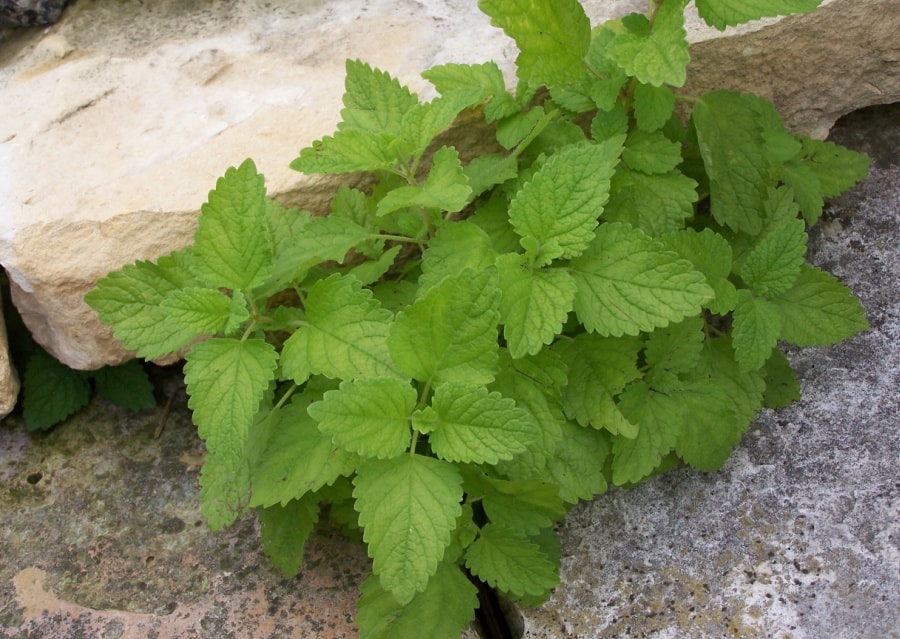
8. Lovage (Levisticum officinale) Zones 4-8
As the best perennial substitute for celery, lovage has a place in home gardens. The stems and roots can be eaten like a vegetable, namely celery, while the leaves and seeds are also edible. Add the leaves and stems to salads, soups, stock, and vinegars. The seeds can be used in pickling, dips, and salad dressing.
Lovage grows 6 feet tall by 4 feet wide. It grows best in full sun to part shade and prefers moist, well-drained soil. Lovage is a member of the Carrot Family and can host the black swallowtail butterfly. The flowers attract beneficial insects.
9. Mints (Mentha species and cultivars) Zones 3-9
Mints are one of my favorite herbs, mainly because I drink a lot of herbal tea. While many tea drinkers prefer peppermint or pennyroyal, I drink strictly spearmint tea. But I also grow other mints, such as Apple, Chocolate, Orange, and Peppermint. The leaves and stems can be steeped for tea, jelly making, ice cream, cakes, cookies, yogurt, or used for making oils. Fresh leaves can be added to drinks, salads, and fruit.
Mints are tough to kill and will grow well in full sun to part shade. Some varieties actually seem to prefer the shade. They are adaptable to many soil types, but are not very drought tolerant. Mints grow 4 to 12 inches tall and spread outward. Plant mint in a buried container to keep them from spreading too much. The flowers are attractive to bees, butterflies, and beneficial insects.
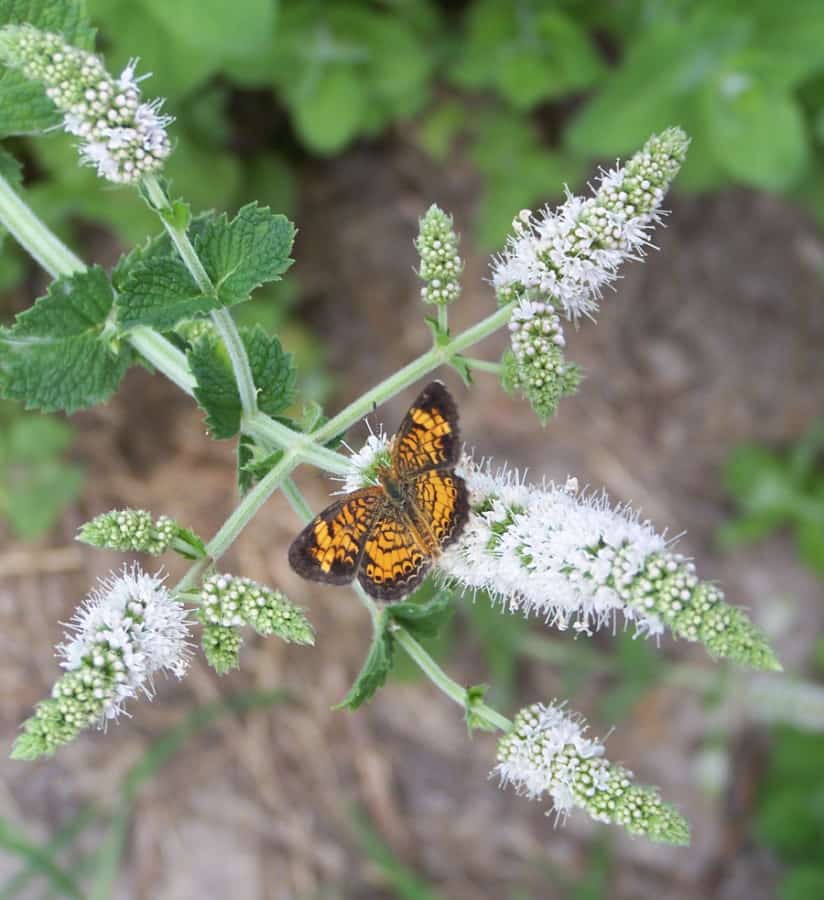
10. Oregano (Origanum species and cultivars) Zones 5-9
If there is one herb which I cannot be without for Italian dishes, it is oregano. I always add more to any pasta or pizza I am cooking. Besides that, oregano can be added to salads, butters, vinegars, and marinades. It also pairs well with meats, wild game, eggs, and other dishes.
In the garden, oregano prefers full sun and well-drained soil. Plant it, water it in once, then treat it like lavender. It grows in small mounds, perfect for the front of the border, growing 4 to 6 inches tall by 2 feet wide. The flowers are fragrant and useful in arrangements, and also attract beneficial insects. There are some golden leaved forms, which prefer light shade.
11. Sage (Salvia officinalis) Zones 4-8
I mostly grow sage for its ornamental characteristics. However, sage has long been used for seasoning meats, especially pork and deer sausage. Also, add sage leaves, fresh or dried, to pork, beans, butters, vinegars, stuffings, and jellies.
Sage comes in a variety of leaf sizes and colors, though the 3 best are green/gray, purple/green, and variegated purple/green/white. They grow best in full sun to light shade, in well-drained soil. Growing 2 to 3 feet tall and wide, sage can be used in containers, border edges, and mixed into a perennial or annual border. The flowers can be quite showy, when they do bloom, and attracts hummingbirds, and beneficial insects.
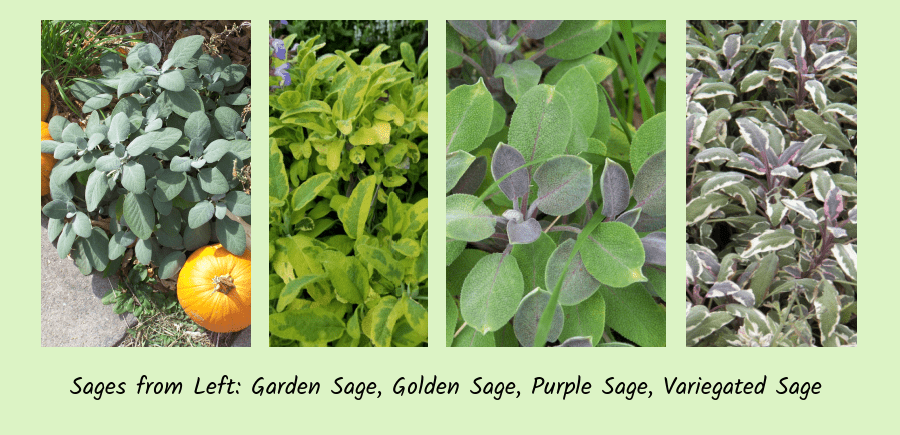
12. Salad Burnet (Poterium sanguisorba) Zones 4-8
As under-used herbs go, salad burnet is probably close to the top of the list. The leaves have a delicate, cucumber-like flavor, and are also high in Vitamin C. Also, the flowers and seeds are edible. Use fresh leaves in salads, vinegars, butters, and soups. Dry the leaves and add to seasoning mixtures. Also add fresh leaves to coleslaws, potato or tuna salad, and salad dressings. Use the flowers as a garnish or add them to salads.
Plant salad burnet in full sun to light shade, in well-drained soil. Start seeds indoors 6 weeks before the last frost date, or buy plants from a nursery. It grows 1 to 2 feet tall and 1 foot wide, so plant is at the front of the border or mix it into an herb garden.
13. French Tarragon (Artemesia dracunculus) Zones 4-8
This is perhaps the one herb I have never really used in the garden. Tarragon has a slight, licorice or anise flavor, and should be used with a light hand in the kitchen. Add chopped leaves to omelets, butters and sauces. It is also useful in traditional French cooking.
French tarragon is sterile and can only be propagated from cuttings or roots. Plant rooted sections in full sun to part shade, and well-drained, rich soil. It grows 2 feet tall and wide and can be used in the border, herb garden, or mixed in with complimentary perennials.
14. Thyme (Thymus species and cultivars) Zones 3-9
Thyme is a very versatile herb, and my wife uses it liberally in a variety of dishes, from breadmaking to pasta. Common thyme has a very distinct, non-fruity flavor, and is used in butters, vinegars, meat and poultry dishes, with eggs, salads, and soups. Lemon and fruit-scented thymes can be added to fish, shellfish, desserts, and sweet teas.
Most thymes are mat or mound forming, and can be planted in full sun, in well-drained soils. Use them along the border edges of various gardens. Some, like creeping or woolly thyme, can be planted between paving stones for a fragrant step in the walkway. The flowers attract small beneficials, especially sweat bees and parasitoid wasps.
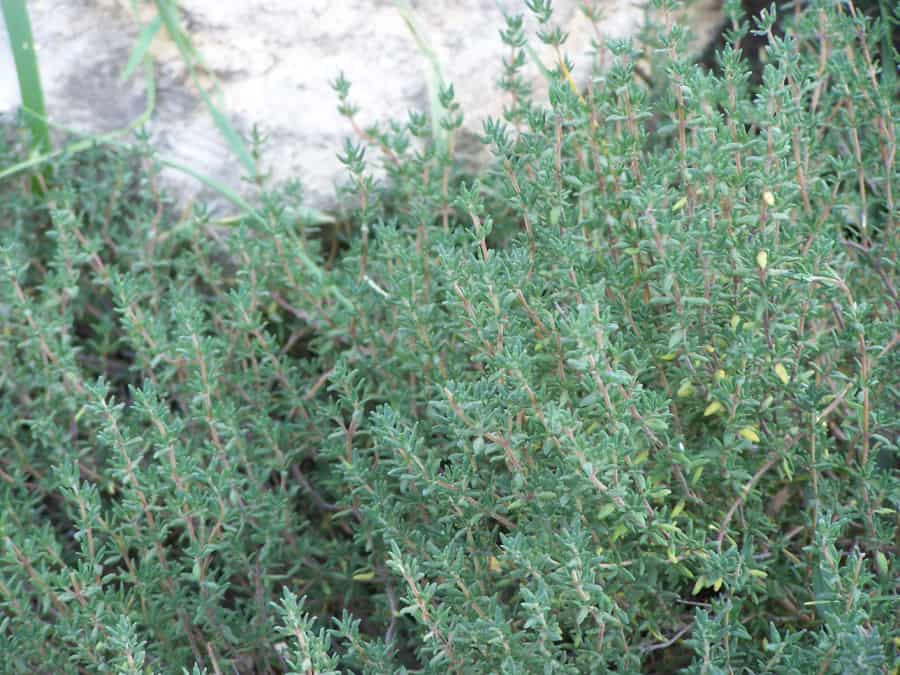
Tropical Herbs
These are essentials in most kitchens, yet many gardeners do not grow their own, but choose to buy from the store. Both of the following herbs can be grown in containers and either harvested at the end of the season, or brought in to a greenhouse, sunroom, or a houseplant’s spot.
1. Bay (Laurus nobilis) Zones 8-10
Another essential in my wife’s cooking, she uses bay leaves in soups, stews, and beef dishes. The leaves have a strong, pungent taste all their own, and can also be used in marinades, pickles, sauces, and gumbos.
Bay grows 5 to 10 feet tall in containers, which is the best way to grow them in the Central Great Plains. Plant them in a large, but movable container, with rich potting soil, and place them on the patio or deck in full sun. The evergreen leaves can be sheared into shapes.
2. Ginger (Zingiber officinale) Zones 9-10
A spice for life, ginger is useful in many ways in the kitchen. I like to add ginger to cooked carrots, ice cream, jelly, cake, tea, or stir-fries. You can also use ginger to flavor kombucha, water, bread, muffins, jams, with fish, vegetables, and meats. Ginger ale is a great drink for an upset stomach.
Growing ginger is easier than most would think. All you need is a large container with good potting soil, and some rhizomes (roots) from the store. Plant them 1 inch deep in the soil and water. Keep the container indoors until danger of frost has passed, then move them outside to a lightly shady spot. Harvest the roots right before the first frost of the years (sometime in October) and store in a cool dry place, or wrapped in paper towels in the refrigerator.
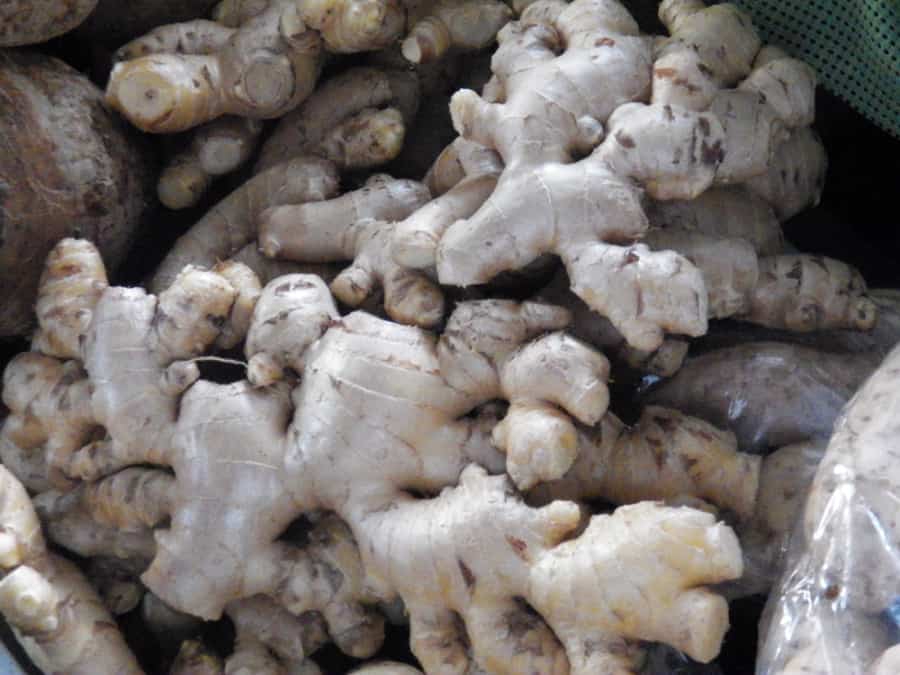
Medicinal Herbs in the Garden
Did you know that many of your favorite plants in the garden are traditional herbal plants for healing? There are a lot of them. More on that at another time, but here is a small list of plants with medicinal properties.
- Yarrow
- Hollyhock
- Pasque flower
- Butterfly milkweed
- Boxwood
- American bittersweet
- Chrysanthemum
- Purple coneflower
- Joe Pye Weed
- Blazingstar
- Peony
Conclusion
Not only are herbs good for seasonings in the kitchen, most of them are attractive to beneficials and pollinators, and make good garden plants, for all areas of the landscape. If you do not have some herbs already in your garden, add some today. Start with those you know you will use first, then plant with trial and error in mind. Just like other gardening.
Happy planting!

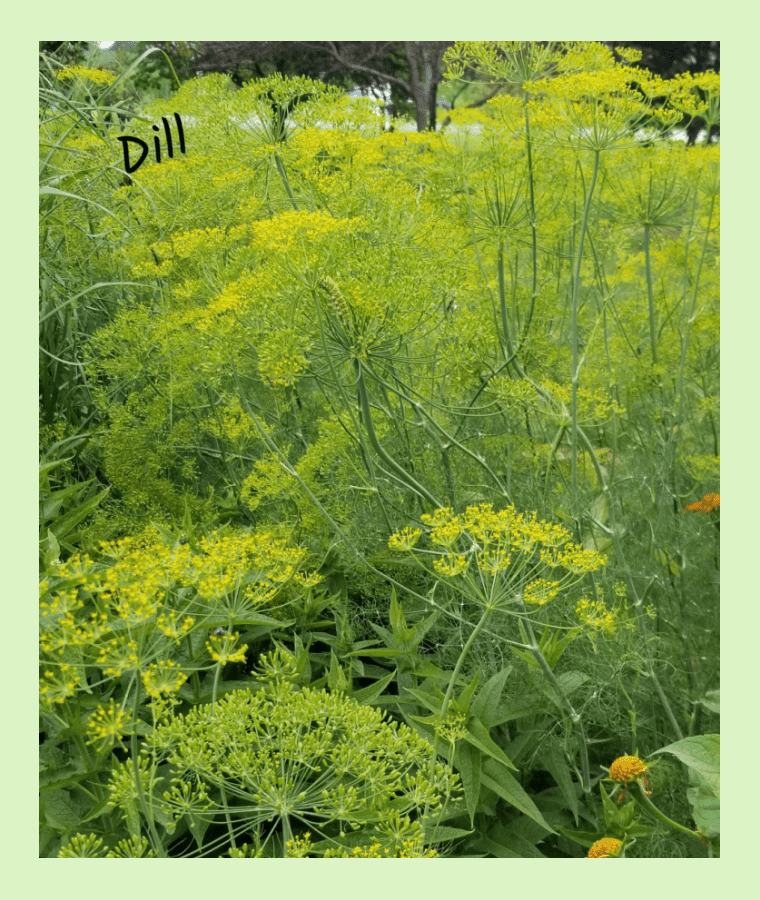



Thanks so much for the in depth descriptions and photos! I am going to look for your other tutorials.